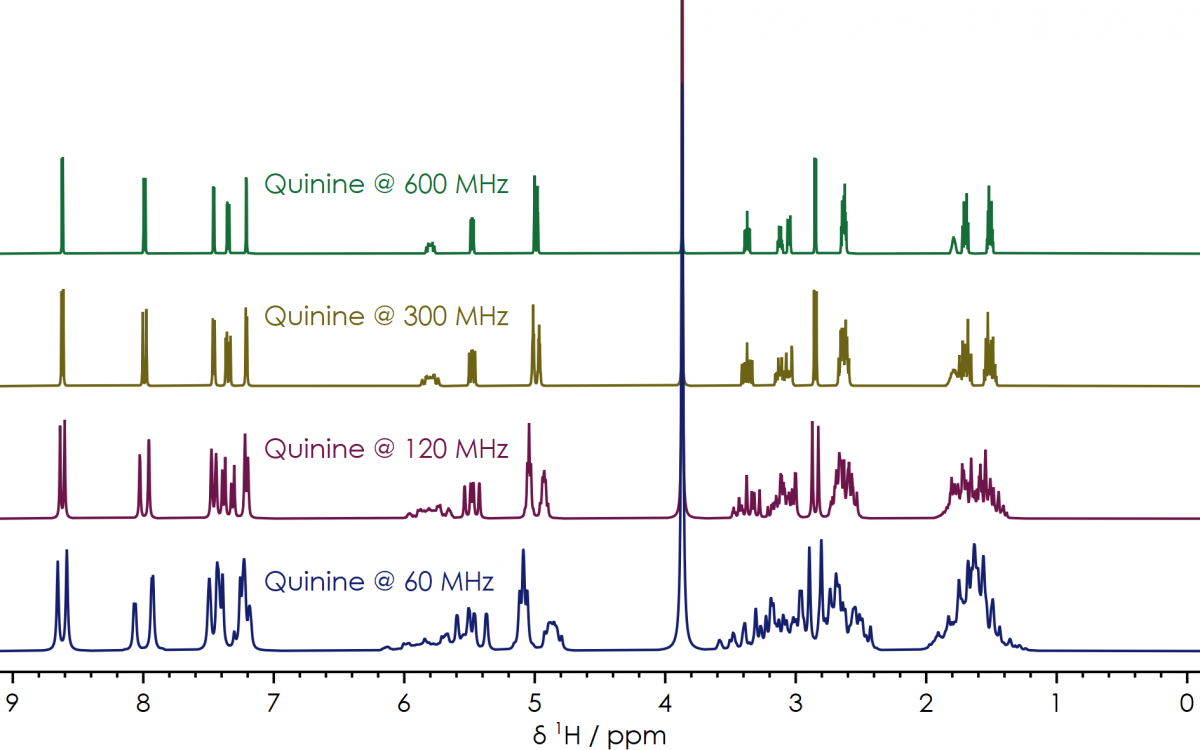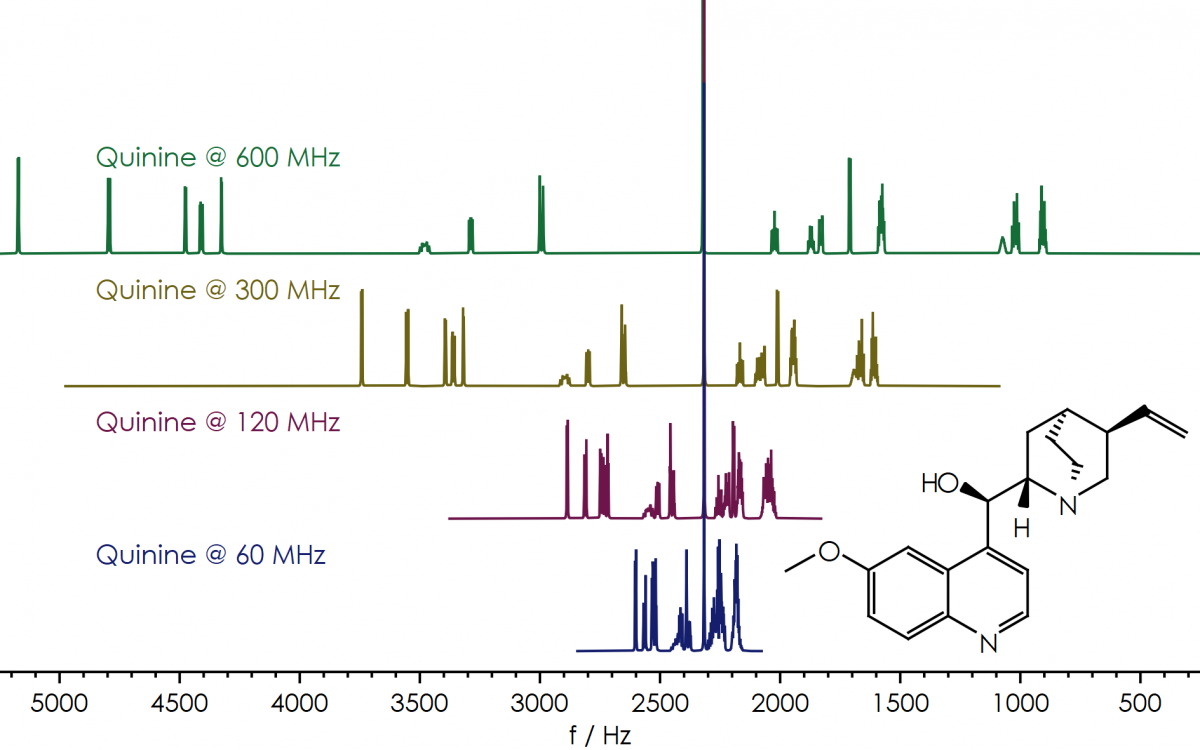Products
Applications
Learning
30th May 2023 | Author: Robin Blagg
In the previous first and second parts of this blog, I discussed how many of the measurements I had previously performed on high-field NMR spectrometers, could (or could not) have been performed on a benchtop NMR spectrometer such as the X-Pulse. Including not only structural elucidation, but also reaction monitoring, performing variable temperature measurements, and measuring diffusion constants.
In this final part, I look at just how much (or little) difference there is between NMR spectra obtained at various field strengths.
When comparing NMR spectra obtained on various spectrometers, it’s important to understand the fundamental differences in the observed spectra which arise as the magnetic field strength varies.
NMR spectra are plotted on a chemical shift scale, in parts-per-million (ppm) of the observed frequency versus the 1H Larmor frequency of the spectrometer (60 MHz for the X-Pulse, 300 MHz for an entry level high-field system, and 1.2 GHz for the highest field magnet on the market today); this means the observed chemical shift of a signal is independent of field strength. However, each signal (which can be made up of multiple peaks) will have a fixed width on a frequency scale. For example, a simple triplet with reasonable peak widths and J-couplings of around 7 Hz, will have a total width of around 15-20 Hz; on a 60 MHz benchtop this corresponds to signal width of ca 0.3 ppm, while on a 600 MHz high-field this would be ca 0.03 ppm. Therefore at lower frequencies, there’s likely to be greater degree of overlap between each signal, as shown in this series of spectra of Quinine, simulated at different field strengths, which show how overlap between signals is reduced at higher fields (although all the information is still there at lower fields).

Quinine 1H Spectra, comparison by field strength (chemical shift / ppm scale)
In comparison, by plotting the Quinine spectra on a frequency scale, shows how each signal has the same width independent of the frequency, and how the overall spectrum is compressed as the field strength decreases.

Quinine 1H Spectra, comparison by field strength (frequency / Hz scale)
Additionally, there is an sensitivity advantage with increased field strength; with an entry level 300 MHz high-field NMR spectrometer having around eleven times the intrinsic sensitivity of a benchtop system such as the X-Pulse (everything else being equal). Therefore while the detection limit for an X-Pulse in a 16 scan 1H NMR spectrum is around 1 mmol/ℓ, the same experiment on a 300 MHz spectrometer will detect around 100 µmol/ℓ (which could be detected in an X-Pulse in a 1600 scan experiment, ten-times the sensitivity requires 100 times the scans / measurement time).
Since starting to work with the X-Pulse Broadband Benchtop NMR Spectrometer, not only have I found that a significant proportion of the NMR spectroscopy I’ve previously performed on high-field systems could have been performed on the X-Pulse. But the convenience factor of having day-to-day access to a benchtop system in the lab, would actually have allowed me to be more productive, by performing more measurements that just wouldn’t have been convenient to perform on communal high-field systems.
Robin Blagg,
Applications Scientist, Oxford Instruments
Robin Blagg is the applications team leader at Oxford Instruments Magnetic Resonance. Robin completed his first degree at the University of York, then obtained his PhD in organometallic chemistry at the University of Bristol, and then undertook post-doctoral research at the Universities of Sussex, Manchester, and East Anglia; before joining Oxford Instruments in October 2020. Robin is a member of the Royal Society of Chemistry (RSC), and serves on the committee of the RSC NMR Discussion Group.